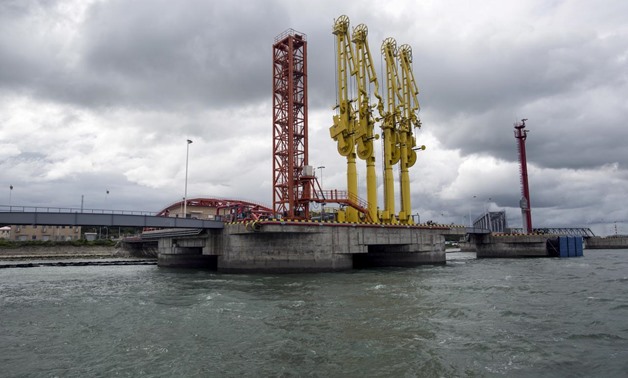
FILE PHOTO: A jetty for oil tankers is seen on Madae island, Kyaukpyu township, Rakhine state, Myanmar October 7, 2015. REUTERS/Soe Zeya Tun/File Photo
SINGAPORE - 30 May 2018: Oil prices steadied on Wednesday after falling steeply in recent days on concerns that Saudi Arabia and Russia will pump more crude in the second half of the year in response to falling global crude inventories and rising consumer prices.
Saudi Arabia and Russia have discussed raising OPEC and non-OPEC oil production by 1 million barrels per day (bpd) to counter potential supply shortfalls from Venezuela and Iran.
Brent crude LCOc1 clawed back early losses to be up 1 cent at $75.40 a barrel by 0619 GMT, after trading as low as $74.81 a barrel.
U.S. West Texas Intermediate crude CLc1 was up 10 cents, at $66.83 a barrel, having touched a session low of $66.35 a barrel. WTI fell more than 7 percent in five previous sessions.
“OPEC has over-delivered on supply cuts in the past six months,” Harry Tchilinguirian, global head of commodity market strategy at French bank BNP Paribas, said in a note to clients.
“There is ... scope for an increase in OPEC output.”
OPEC-led supply curbs have largely cleared an inventory surplus in industrialized countries, and stocks continue to decline. The Organization of the Petroleum Exporting Countries is due to meet in Vienna on June 22.
Plans to boost output have spooked oil market bulls, who are starting to seek protection at levels well below the current futures price in case the group delivers a rapid increase in production.
Credit Suisse analysts on Tuesday said even if Russia and OPEC producers raise output, they would likely only add an additional 500,000 bpd, which would leave inventories in the most developed countries short of the five-year average by the end of 2018.
Falling share prices and a stronger U.S. dollar index also weighed on oil prices. U.S. stock markets sank more than 1 percent, while the dollar wobbled at a 10-month high against the euro. A stronger dollar makes greenback-denominated commodities more expensive for holders of other currencies.
U.S. oil got some support as U.S. crude inventories likely fell by 1.8 million barrels last week, a preliminary Reuters poll showed on Tuesday. [EIA/S]
Industry group American Petroleum Institute (API) releases its weekly oil data at 2030 GMT, followed by the report by U.S. Energy Department’s Energy Information Administration on Thursday, both delayed a day because of the federal Memorial Day holiday on Monday.

Comments
Leave a Comment